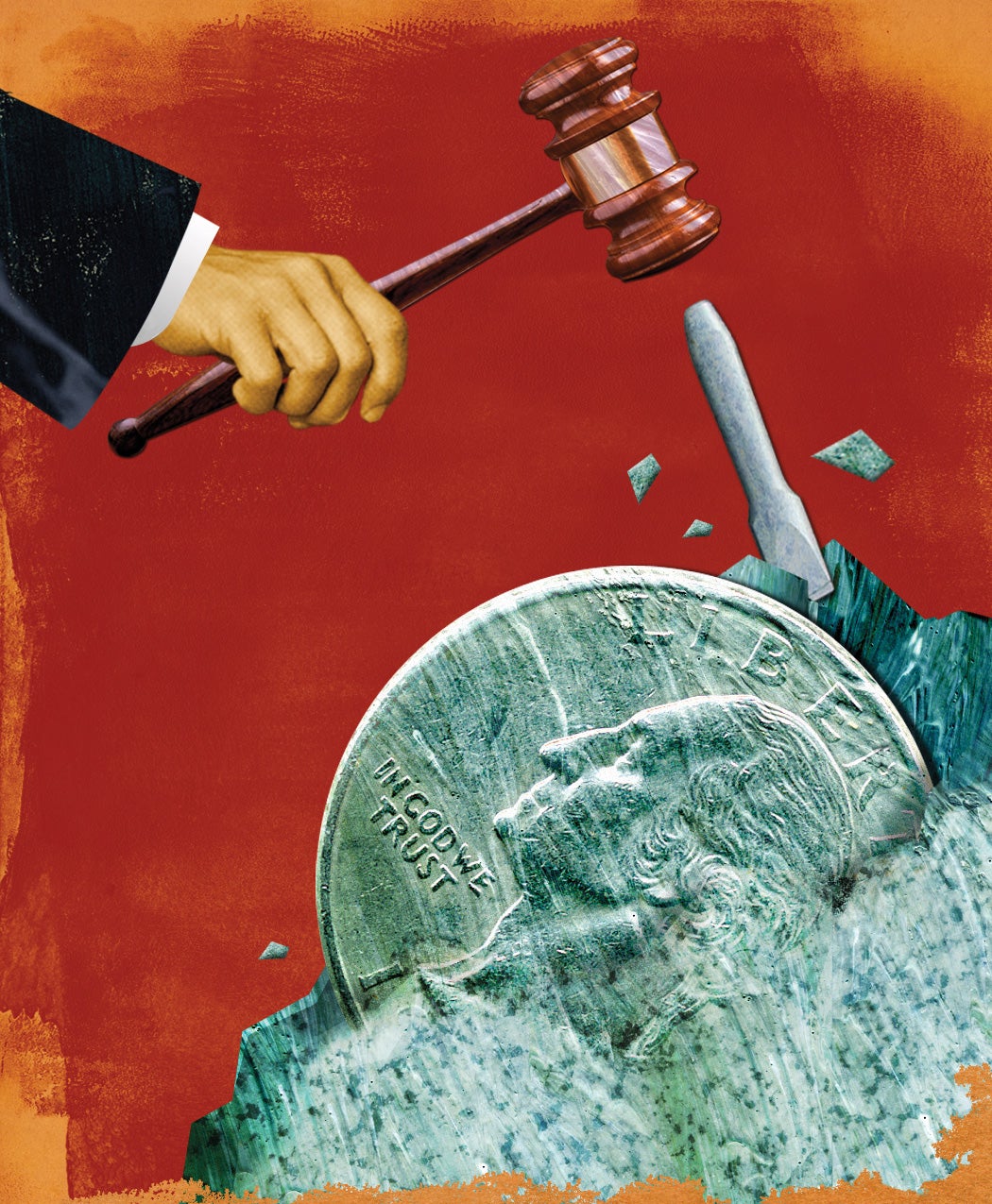Uncovering the legal debates at the heart of modern money
For the past decade, the legal historian has focused on money as a “creature of law.” In a recent work on the subject, “Beyond Commodification: Contract and the Credit-Based World of Modern Capitalism” (published in the collection “Transformation of American Law II: Essays for Morton Horwitz”), Desan examines how governments manage money, and the legalities that define it.
Desan’s argument is that societies have made money in many different ways and that those differences matter enormously. In “Beyond Commodification,” she examines the way contract doctrine has changed along with money. She contrasts the kind of contract that undergirded medieval money with the doctrine that supports modern, bank-based money. “The essay is aimed at the notion we almost all share that money is just a function, just a thing that makes exchanges happen,” she says. “I argue instead that money has never been a neutral technology, not even when it seemed to be a commodity and certainly not when it became bank money.”
Desan begins her story in the medieval period because money made of precious metal seems to be such a simple, straightforward means of exchange. But silver and gold coins were surprisingly fragile media: They circulated stably only when their net value, a compound including both their commodity and liquidity values, remained constant across denominations and borders. And that rarely occurred. Coins wore out, prices of silver and gold changed, and sovereigns competed to attract precious metal to their mints. As a result, governments periodically had to change the face value of their coin. That intervention caused enormous controversies—devaluations or revaluations hurt creditors or debtors, left people with more or less silver or gold relative to the face value of their money, and generally shook up prices. Given the turmoil, the government’s action had to be legitimized—and it was. Common law courts held that the sovereign could modify the contract that made money in order to support its ability to circulate. The legal order was knit together by a jurisprudence that defined liquidity as a public resource and required people to sacrifice property to make it work.
Modern money operates according to a radically different kind of contract—or at least so it seems at first glance, says Desan. Most of the circulating medium that people use to pay public or private obligations is now produced by banks that back the checks their customers write on deposits. Those checks multiply the much smaller reserve, once made of gold and today made of cash, held by the banks. “Contract doctrine becomes essential to making money all over again,” she says. “Only if people believe the bank promise is sacrosanct will they hold paper representations of value rather than demanding gold or cash out of the bank reserves.” Desan points here to a landmark case from the 1930s, U.S. v. Perry, in which the Supreme Court repudiated Congress’ power to depreciate the amount of gold in the gold dollars owed to those holding WWI liberty bonds. “The doctrine of contract that the Court developed in Perry is far from the older and more flexible approach,” she says. “New doctrine condemns change from the original terms of a bargain, holds the government to the same standards as an individual and treats the bond as if it were a private agreement.”
The story has a twist, however. After it sanctified the contract and repudiated legislative devaluation of gold coin, the Supreme Court in Perry reached the question of damages—and decided there were none. When Congress had devalued gold coin, it had also destroyed the legitimate market for the original coin and the gold in it. There was no way to measure the loss to the claimant, said the Court, which meant that there was no loss at all. Perry still had all the legal tender to which he was entitled, when the Court considered the legitimate market.
The amazing twist in Perry has had a remarkable result, says Desan: It confirms that the contract underlying money should be considered rigid and binding, according to its ex ante terms. But it preserves the government’s power in times of exigency to make changes.
Desan argues that the modern approach “critically configures the new political economy.” Modern markets depend on highly leveraged forms of liquidity that people will accept only if they are strengthened by rigid guarantees. Most of the time, those guarantees operate smoothly. They even reduce the strain on reserves by creating credit that itself provides liquidity. But in the end, the money supply remains a public entity and depends on the judgment of political authorities. She concludes that the law needs improvement beyond the sleight of hand we inherited from Perry: “As the financial crisis demonstrated, we need to map money’s legal dynamics, consider its distributive impact and reform it to operate more effectively and fairly.”
